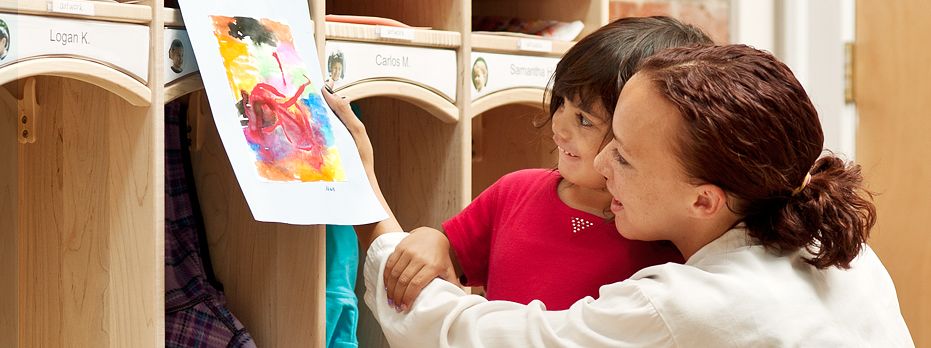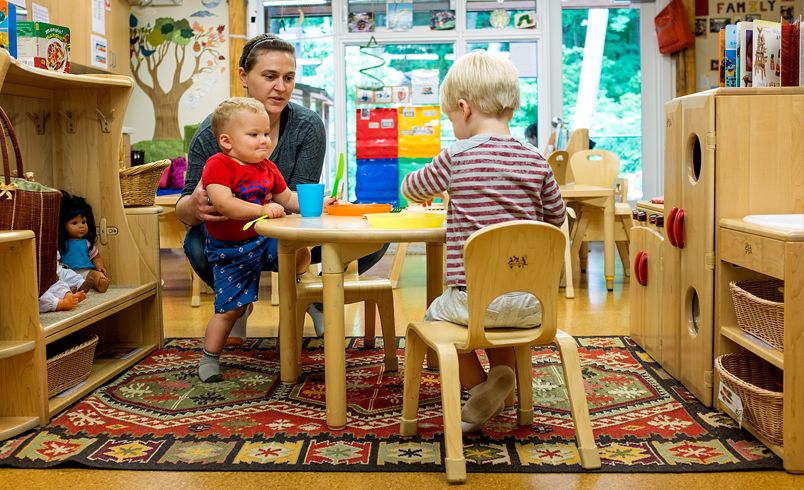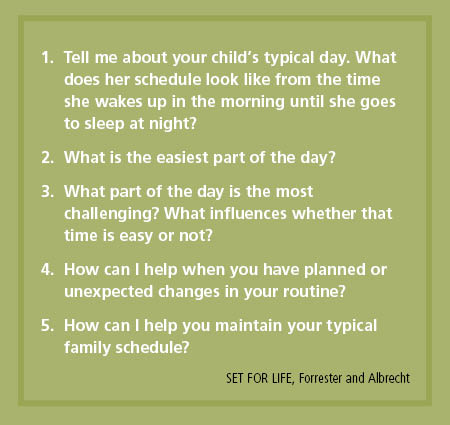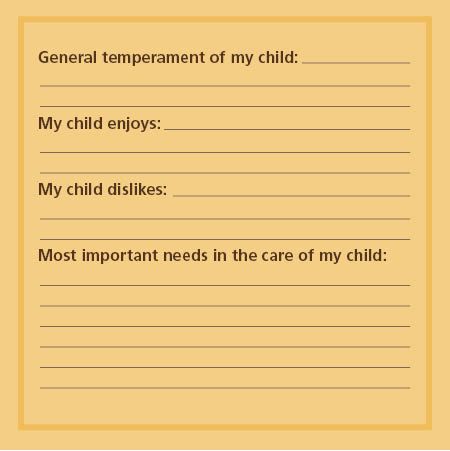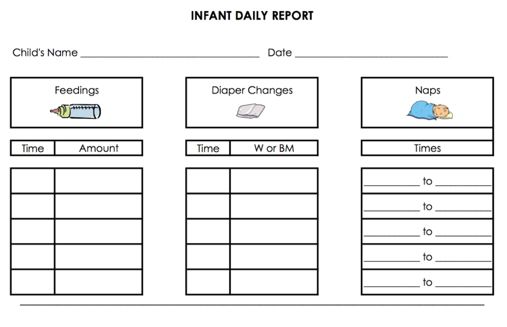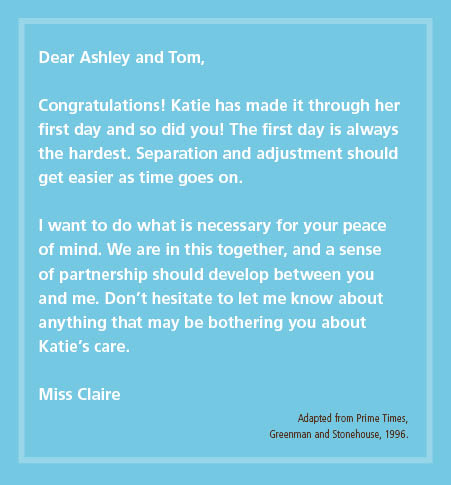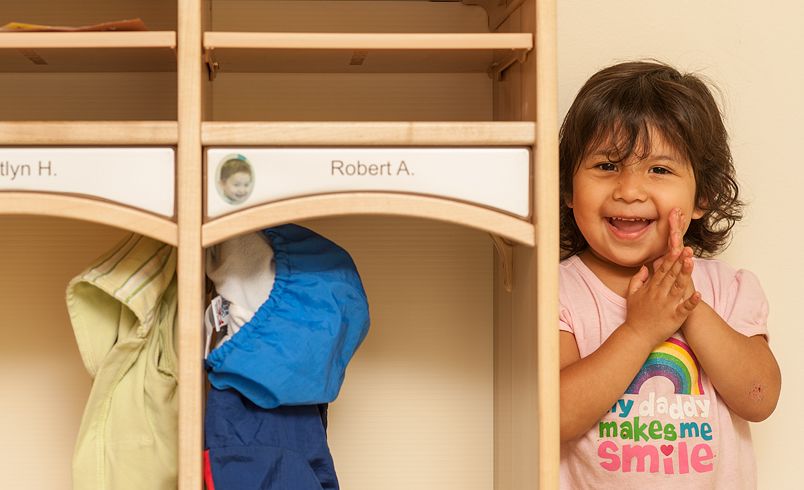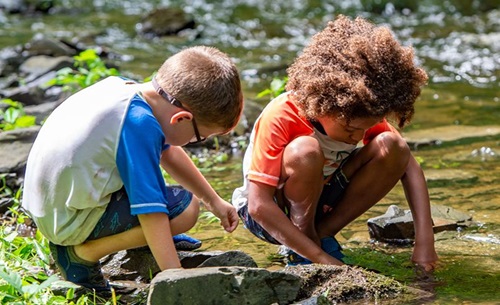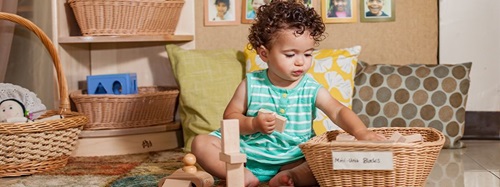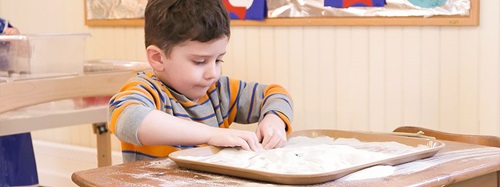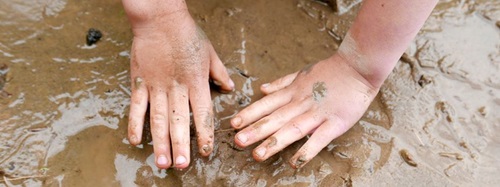Building Relationships with New Families:
The Benefits of Gradual Enrollment
| January 2018Building and sustaining relationships is a core aspect of child development (Daniel, 2009). The National Research Council and Institute of Medicine (2006) note that if a child develops a strong and sustaining attachment to a caregiver, they are less nervous, less fearful, have a greater self-efficacy, and are more competent. By assigning families to a specific teacher or caregiver when they enroll in your facility, teachers are then able to compliment the role of the parents in providing care for the child. From casual conversations, daily notes, and parent-teacher conferences, active communication between families and teachers is encouraged.
For families who are new to your facility it is vital that they know who the “go to” person is if they have a query or concern about their child’s day. Many families do not know whom they should approach or contact if they have a question or concern about their child (Banks, 2013). Not only is it important for the family to feel comfortable and secure in your care, but teachers may be missing out on important information about the child which will aid them in performing their job to the best of their ability.
Now that they’ve chosen your facility, parents have a vested interest in the center and want to feel comfortable and welcomed. Spend time sharing information with parents, and offer opportunities for families to ask you questions on your teaching methods. These simple strategies can help build the feeling of belonging. After all, you’re both interested in the same thing–the care and development of the child.
One of the best ways to facilitate a family’s adjustment to a new facility is to offer a gradual enrollment with the child’s first teacher. The purpose of a gradual enrollment is to give parents, children, and teachers time to get to know each other and to establish a relationship (Albrecht & Miller, 2001). A gradual enrollment may take place over several days, or even a week, depending on how much time a parent has, and how well all parties feel about the transition. The child and parent may stay one or two hours the first day and work up to a full day.
Making a parent and child feel welcome on their first day is very important in establishing a relationship. A welcome sign is a great way to prepare for a child’s arrival in your classroom. By creating a welcome sign, you are showing families how pleased you are that they have chosen your facility and that you care about them.
A gradual enrollment provides opportunities to:
Discover expectations
Just as each child is an individual with different needs and expectations so too are families. Jamie’s family may not have the same learning expectations that Aliya-Su’s family does. Harish’s family may be teaching him to speak in another language at home, or Catriona’s family may believe that she should only have her pacifier when she goes to sleep. You cannot know what parents expect if you haven’t had a conversation with them about their needs and desires.
Understand routines
Take the time to talk with families to find out a little about their child’s routine. I have found that asking questions about the child’s likes and dislikes, what she eats, sleeping patterns, and methods or practices the parent uses gives an insight into the child and can help me to prepare for situations. Find out about the parent’s routine too. Where do they work–is it close by? Is this their first time going back to work–how do they feel about returning? What will their work hours be–who will be dropping off and picking up? Understanding their work schedule will assist you in knowing the best times to communicate with them.
Discuss and share your routine, also: how your classroom generally works–a general timetable such as when you go outside or when children nap; the hours you are there and who covers the class before or after your shift.
Ask questions
Prepare a questionnaire that teachers can either ask parents or give them to take home. Questions may include: What are some of your child’s favorite toys? Who is in your household? What is comforting to your child when he/she is upset? What is something that you enjoy about your child?You may also include a daily routine sheet about the child. These forms can be kept and added to the child’s portfolio. If you don’t have an Infant/Toddler Needs and Services Plan there are many examples like this one or online which you can adapt for your center.
Explain contact procedures
Make parents aware of who their primary contact person is. Sometimes it is not the teacher in the room when they drop off in the morning or pick up in the afternoon. It is important that they know who to call or contact if they have a question, concern, or need to share information about their child. Introduce families to all staff members that they and their child will be in contact with. Even though they may not be the child’s primary care giver, other staff members are part of the child’s community.
Ease the transition from home
Asking families to bring in or email photographs of their family that can be put either in the child’s crib, cubby, or on a display within the classroom is one way in helping them feel they belong in your facility. Having a reminder of home can help ease children’s anxiety and begin to feel like a part of the class. Encourage families to bring in something from home that is comforting to the child, perhaps a toy or blanket that they can hold should they feel the need to be close to home
Be available
When a new family begins in your classroom, try to be there either when the child arrives at the start of the day or when they are picked up at the end of the day. Being available to families to chat about the child’s day, especially when they are new, is very helpful in establishing a relationship. Communicating via email, phone calls, and charts is also important but the importance of a face-to-face relationship cannot be underestimated.
Celebrate
When the gradual enrollment is over and the child has completed their first full day alone, celebrate the occasion by documenting the day, and even the week, with a special book, photographs, or documents. A first day postcard is a special memento of the day and shows parents that you care about them and their child.
Leaving a child in the care of a stranger is a difficult thing to do. A gradual enrollment allows for time to build trust and not to be overwhelmed with all the questions and expectations on one day. By spreading the enrollment over several days parents and teachers can get to know each other, the child’s needs, and develop a working relationship that suits everyone’s needs.
Developing a relationship takes time and effort. Teachers will need support and guidelines for working with a new family. When a new family begins in your facility offer the above tools to teachers to assist in establishing a relationship.
The parent-teacher relationship is complex but the characteristics required for building and sustaining relationships with families must be nurtured. Offering a gradual enrollment to new families will assist teachers in getting to know and understand the best ways to care and nurture the child and help families to feel welcome and comfortable with their new surroundings.
References:
Albrecht, K., & Miller, L. (2001). Infant and Toddler Development. Beltsville: Gryphon House Inc.
Banks, M., (2013). Relationships in early childhood education and care: a qualitative study of the parent-teacher relationship from parents’ perspectives. University of New England.
Daniel, J. (2009). Intentionally thoughtful family engagement in early childhood education. YC Young Children, 64(5), 10-14.
Greenman, J., & Stonehouse, A., (1996). Prime Times. St. Paul, MN: Redleaf Press.
National Research Council and Institute of Medicine. (2000). From Neurons to Neighborhoods: The Science of Early Childhood Development. Committee on Integrating the Science of Early Childhood Development. Jack P. Shonkoff and Deborah A. Phillips, eds. Board on Children, Youth, and Families, Commission on Behavioral and Social Sciences and Education. Washington, D.C. National Academy Press.

